Andalusia and its Fascinating History
2021/6/25
Motril (Spain)
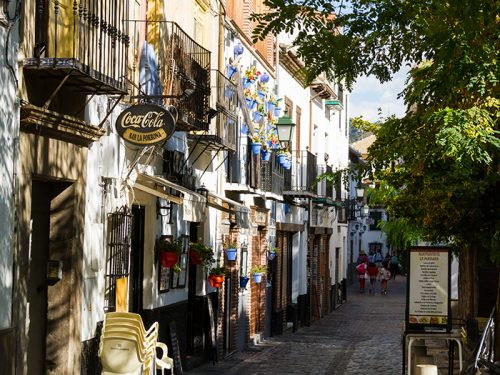
Andalusia, located in the south of Spain at the southernmost tip of the European continent, is characterized by the strong sunlight that illuminates the land and the somewhat exotic scent of the city. The region has accumulated many layers of history over the years. Eight centuries of Muslim rule gave birth to a unique culture and art, adding to its appeal. The history of conquest, prosperity, and fall still surrounds the city and invites visitors to explore. In addition, Andalusia is said to be the “most Spanish” place in Spain. You can enjoy visiting bars, World Heritage sites, and the beautiful villages along the Mediterranean coast. Your high expectations will be met!
A Masterpiece of Islamic Art
As the ship arrives in Motril, a tranquil port town facing the Mediterranean Sea, take a bus to head inland. Through the window, you will see the beautiful Sierra Nevada Mountains covered with perennial snow. Located at the foot of mhe Mountains is the city of Granada that has a long history dating back to the Roman era. Muslims first arrived in the city around the 8th century. It became the capital of the Nasr dynasty in the 13th Century, then fell in the late 15th century during the Christian Reconquista. For 800 years Granada flourished as the center of Islamic culture, and the most symbolic building is the Alhambra Palace. This World Heritage Site is known as the “Jewel of Andalusia,” and looks more like a fortress than a palace. What will you see inside?
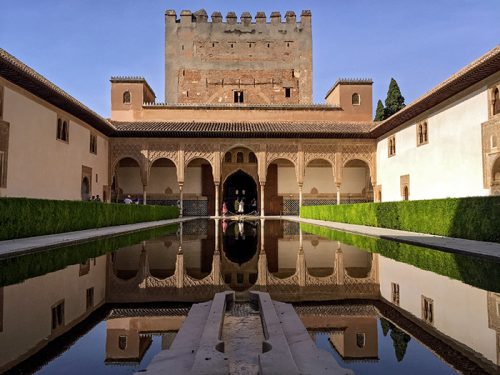
The Alhambra Palace has been repeatedly expanded and renovated by rulers of different periods. Entering the Nasr Palace, the main attraction, you can’t help but marvel at the mystical space created by the elaborate reliefs, stucco work, and graceful arches that are unimaginable just looking at the simple exterior. The ceiling and wall decorations change as you move from one room to another, and you will deeply appreciate the anecdote that “the king used magic to complete the palace.” There is a courtyard with a pond in the center of the building, and the water surface of the pond reflects the palace in a mirror. The pond was built to cool the hot Andalusian summers, but it is said that it was also a sign of power to be able to carry large amounts of water to the high ground.
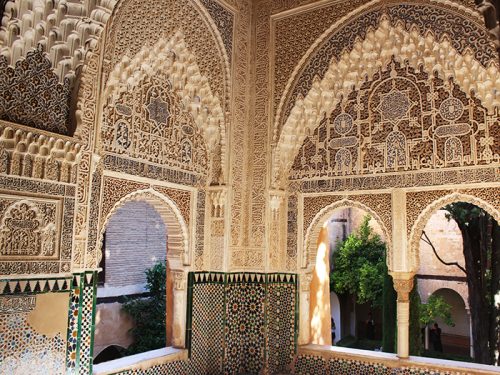
The walls and ceilings are covered with plants, arabesque (geometric) patterns, and decorative calligraphy. This technique is unique to Islam, where idolatry is forbidden. The unspeakable beauty of the reliefs, each one with a different expression, draws the eye in. The Andalusian sunlight shining through the openwork windows is also a prop that enhances these decorations. The shadows of light make the elaborate space appear even more fantastic. The ceiling decorations called muqarnas, the extravagant balconies, and the many other artworks that adorn the palace seem to tell us that this was heaven, and it is truly captivating.

Albaicín, a town with a sense of history
After enjoying the Alhambra Palace, cross the Daro River to the Albaicin district, a World Heritage Site to the north. This is the oldest part of Granada, with beautiful white walls and cobblestone streets. Originally a Muslim settlement, it is a maze of streets planned to avoid enemy invasion. The main attraction here is the panoramic view of the Alhambra Palace from the observatory. As you gaze across the river, thinking of the fantastic space inside, you will be captivated by the sight as if time has stopped. As the sun begins to set and the palace begins to fade, take a walk down the hill and enjoy the city of Granada.
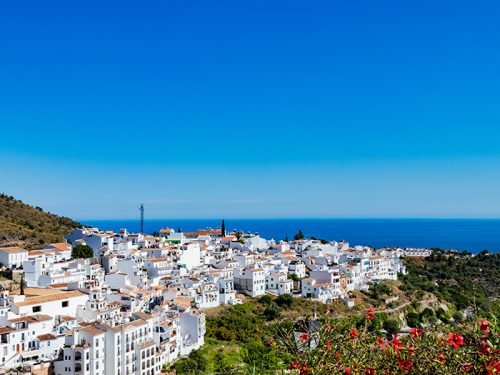
Frigiliana, a simple and beautiful town
If you’re in Andalusia, you’ll want to visit a simple village that offers a glimpse of Spain. About an hour from Motril, you will arrive at Frigiliana, a beautiful town with gleaming white walls. In Andalusia, it is traditional to paint the houses white to repel the strong sunlight. The white walls and pastel-colored doors, combined with blooming flowers, make the city look like a picture postcard. As you walk excitedly up the hills, stairs, and narrow streets, look up and see the Mediterranean Sea in the distance! Even if you don’t aim for anywhere in particular, just walking around this village, everything you see is photogenic.
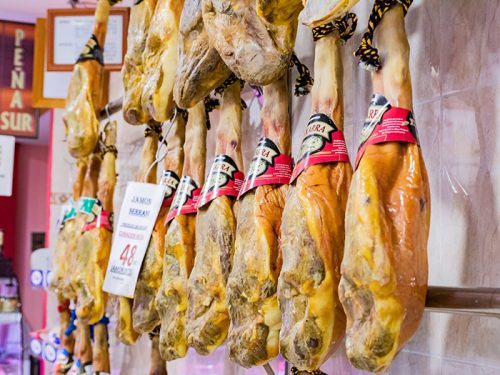
Exciting Bar Hopping
To end your trip, let’s visit a bar, a specialty of Spain. Open the door and say “Hola!” with an excited feeling to the store owner. It is difficult to decide which tapas to choose, but the basic starter would be the famous Spanish cured ham and chilled wine. The cured ham is sliced right in front of you, and when you put it in your mouth, the fat and saltiness melt in your mouth, a perfect match with the aroma of the wine. This happy combination coincides with the complex history that this city has accumulated. Please enjoy your time at the bar while thinking about the region of Andalusia, where the dazzling sun and the shadows coexist.
PHOTO: PEACEBOAT, Isogai Miki, Nakasuji Kota
